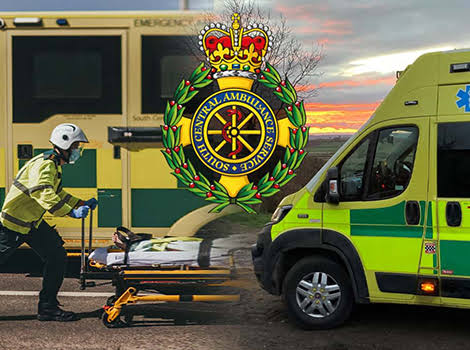We’ll go over the significance of EMS ePCR software, as well as its key characteristics, advantages, difficulties, and how it is influencing emergency medical services going forward, in this extensive guide.
What is EMS ePCR Software?
A motorized platform called EMS ePCR softwares was created to record cases’ care during pre-hospital exigency medical services. By replacing conventional paper forms, it gives EMS brigades the option to electronically capture patient data using laptops, tablets or cellphones.Data exchange with hospitals, insurance companies, and other stakeholders is made easy by the software’s integration with several systems.
Enhancing communication between healthcare installations and exigency askers, perfecting patient data quality and availability and guaranteeing adherence to assiduity norms similar as National Emergency Medical Services Information Systems( NEMSIS) are the main idea of ePCR software.
Core Features of EMS ePCR Software
The following characteristics of EMS ePCR software maximize emergency response workflows:
1. Instantaneous Data Input
On-site, EMS providers can enter patient information, symptoms, vital signs, and treatment specifics. Accuracy is guaranteed and redundancy is removed through real-time data collection.
2. Medical Device Integration
Devices such as pulse oximeters and ECG monitors can be integrated with contemporary ePCR solutions. This lowers the possibility of human entry errors by enabling the automatic transfer of patient vitals.
3. Mapping with GPS Instruments
Numerous ePCR solutions provide GPS-enabled capabilities for tracking ambulance positions, optimizing routes, and giving hospitals real-time patient arrival time updates.
4. Safe Exchange of Information
To ensure data integrity and HIPAA compliance, ePCR systems are designed with strong encryption mechanisms to send private patient data to receiving hospitals.
5. Analytics and Reporting
EMS agencies can examine response times, treatment results, and other key performance indicators (KPIs) with the software’s customisable reporting features.
6. Personalized Templates
To ensure that all pertinent data is recorded, ePCR platforms frequently feature templates designed for particular incident categories, such as pediatric crises, cardiac events, or trauma.
The Benefits of EMS ePCR Software
1. Improved Medical Attention
ePCR software guarantees that emergency medical personnel have a comprehensive record of the patient’s health, therapies administered, and any modifications made while in transit by facilitating real-time documentation. For hospital staff to continue providing treatment without interruption, this information is essential.
2. Enhanced Efficiency in Operations
EMS teams can devote more time to patient care and less time to paperwork. Documentation is greatly accelerated by automating repetitive processes, such as recording vital signs.
3. Correct Invoicing and Adherence
ePCR systems provide the comprehensive, consistent records needed for reimbursement, which expedites the billing process. Adherence to NEMSIS and HIPAA guarantees that organizations fulfill legal obligations.
4. Better Communication with Healthcare Facilities
Medical teams can better anticipate the patient’s unique needs by sharing patient data with receiving hospitals before arrival, which speeds up reaction times and improves results.
5. Data-Driven Decision-Making
Using historical data, EMS organizations can employ analytics tools to spot trends, enhance resource allocation, and improve training initiatives.
6. Effects on the Environment
Paper waste is decreased when electronic technologies are used in place of paper forms, which promotes environmentally friendly operations.
Applications of EMS ePCR Software
Because of its versatility, EMS ePCR software is used by a variety of emergency services:
1. Emergency Medical Services
ePCR-equipped ambulances may record patient data while on route and send it to hospitals, guaranteeing smooth handoffs.
2. Fire Departments
To oversee patient care during fire-related incidents or rescues, a large number of fire departments that provide EMS services employ ePCR.
3. Reaction to Disasters
ePCR systems aid in the tracking and management of numerous patients at once during mass casualty incidents, enhancing resource allocation and coordination.
4. Air Medical Services
Hospitals can get ready ahead of time by using air ambulances to record and send data from hard-to-reach or remote locations using ePCR software.
Challenges in Implementing EMS ePCR Software
Notwithstanding its advantages, EMS ePCR software has drawbacks that businesses need to be aware of:
1. Implementation Cost
Purchasing equipment, obtaining software licenses, and receiving training are all necessary for ePCR software adoption. For smaller EMS organizations with lower funds, this could be a challenge.
2. Opposition to Change
Staff members who are apprehensive about new processes or who are not comfortable with technology may oppose the switch from paper-based systems to digital platforms.
3. Problems with Connectivity
EMS crews may experience connectivity problems in rural or isolated locations, which makes it challenging to transmit data in real time. In these situations, offline functioning becomes crucial.
4. Privacy Issues with Data
It is crucial to make sure that data protection regulations like HIPAA are followed. Any patient data leak could have negative financial and legal effects.
5. Updating and Maintaining Systems
For ePCR software to remain compatible with changing laws and technical developments, it needs to be updated and maintained frequently.
Future Trends in EMS ePCR Software
Emerging advances in EMS ePCR software are expected to revolutionize emergency medical services.
1. AI-Driven Perspectives
By recognizing trends, forecasting patient outcomes, and recommending treatments based on past data, artificial intelligence will improve ePCR systems.
2. Solutions Based on the Cloud
EMS organizations will be able to access patient data from any location thanks to cloud computing, which will enhance field team and hospital communication.
3. Integration of Wearables and Mobile
EMS teams may be able to continually monitor patient vitals with the integration of future ePCR systems with wearable medical technology.
4. Superior Interoperability
Redundancy will be decreased and information flow will be streamlined with improved interoperability between hospital electronic health records (EHRs) and ePCR systems.
5. Documentation Activated by Voice
EMS personnel may be able to record patient treatment hands-free with voice recognition technology, increasing productivity in high-stress situations.
How to Choose the Right EMS ePCR Software
- The particular requirements of an agency determine which ePCR solution is best. Here are some important things to think about:
- Ease of Use: Seek out user-friendly interfaces that reduce EMS teams’ learning curve.
- Customization: Verify that the program offers templates made to fit the requirements of your company.
- Compliance: Confirm that the system satisfies all legal criteria, such as NEMESIS and HIPAA guidelines.
- Scalability: As demand rises, pick a platform that can expand with your agency.
- Support and Training: Choose suppliers who provide extensive training materials and customer support.
Conclusion:
The way emergency medical services record and oversee patient treatment is being completely transformed by EMS ePCR software. EMS providers can concentrate on what really matters—saving lives—by using ePCR systems to digitize and automate crucial processes. Even though there are obstacles like implementation costs and data privacy issues, ePCR software is a revolutionary tool in contemporary emergency response since the advantages greatly exceed the drawbacks.
The incorporation of wearable technologies, cloud computing, and artificial intelligence (AI) into ePCR platforms will expand their capabilities as technology develops. Adopting ePCR software is a leap toward providing more effective, precise, and compassionate care for EMS agencies—it’s not merely a step toward modernization.







